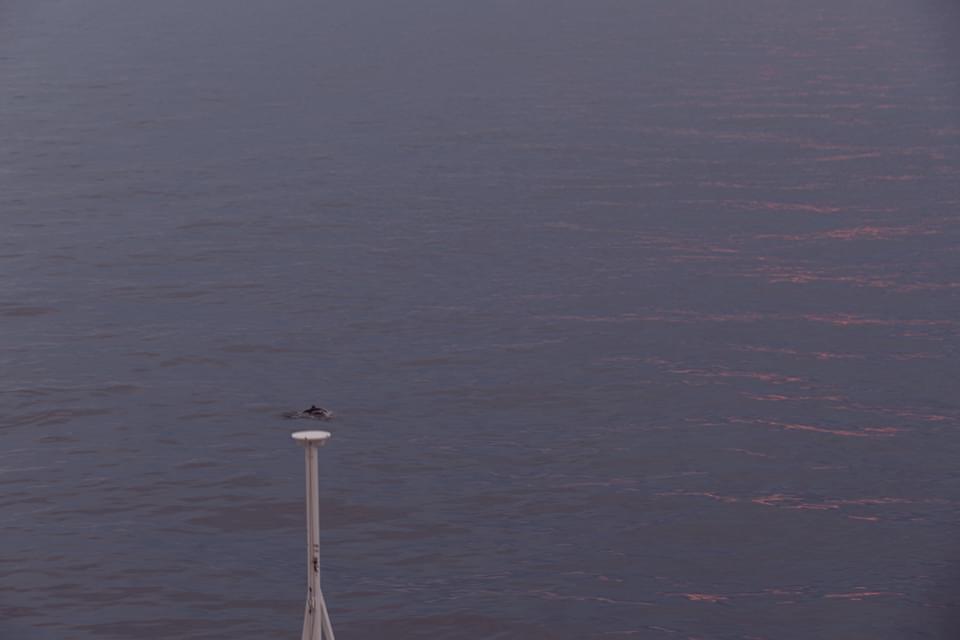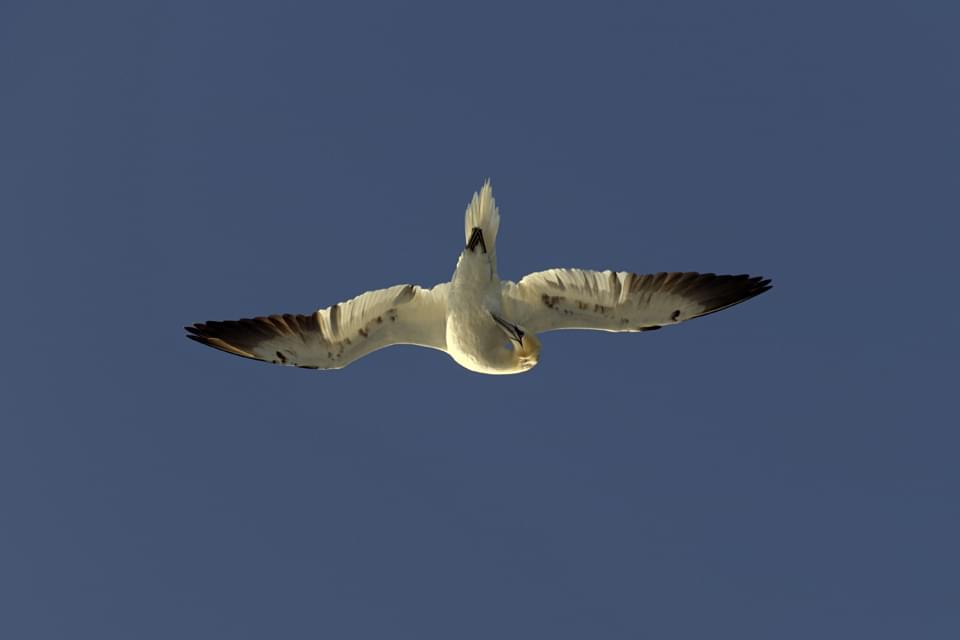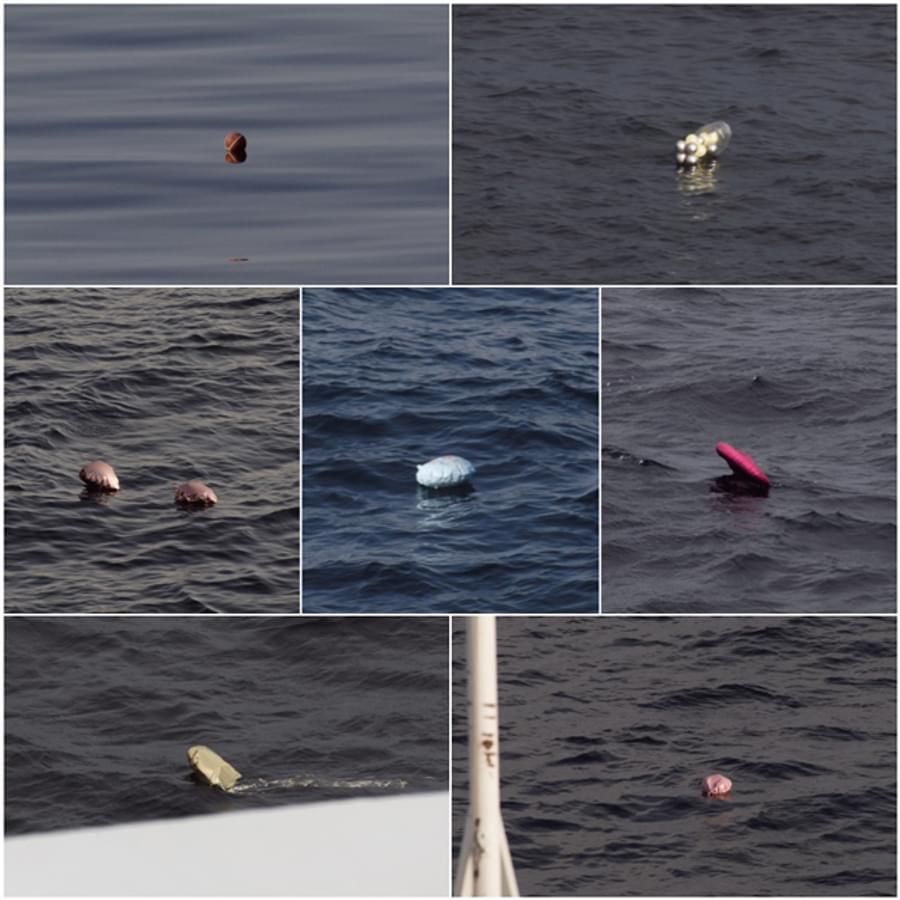It's not just marine wildlife Ocean Conservationist Mathilde has seen in the North Sea ...
Summer really is here, and with some very warm weather in the middle of this rotation, it definitely felt like it! Although sightings have been on the quieter side, the harbour porpoises and grey seals have been doing their best to entertain us all, just like the white-beaked dolphins on the UK side. We did, however, have some amazing conditions for observing porpoises and very eager and enthusiastic passengers. We also saw lots of strange things floating by the ship during these two weeks…
There were a couple of memorable evenings leaving IJmuiden with near-perfect conditions. Some enthusiastic passengers joined me on the observation deck, and they quickly became excellent spotters and spotted some porpoises. A mother and her daughter were particularly interested and stayed out with me for a few hours. It was getting close to sunset when we started joking about how amazing it would be to see something whilst the sun was setting. We still think that the porpoises were actually listening to us because within minutes, one popped up, followed by two small groups, including calves. Everyone who had come to the observation deck to watch the sunset forgot about the setting sun - who needs to see the sun set into the sea when you can look for porpoises! It was amazing to see people get so excited to see porpoises, normally, everyone just wants to see dolphins and whales, and they simply get overlooked. But that evening, the harbour porpoises stole the show. Another evening we left the port of Tyne very late but were treated to a pod of around seven white-beaked dolphins. Who were first milling on the horizon and then started jumping and porpoising away, so everyone had a great look at these amazing acrobatic dolphins!
When there are no marine mammals to spot, gannets get all the attention, especially when, from time to time, they are soaring just above the observation deck.


There is something else that I and passengers started to notice during this rotation. The amount of rubbish we are seeing out at sea. Not just any rubbish, mostly (foil) balloons. And since the heatwave, some footballs, basketballs and even some inflatable beach beds had floated out to sea.
But it’s the (foil) balloons I want to talk about. Some days I saw multiple balloons as we sailed through the North Sea, which prompted me to start photographing them (the collage is only a small fraction of what I have seen).

These balloons float by in many shapes and sizes, from round ones to letters, numbers, fruits and even animals. It takes many years for them to decompose, and even the latex ones, which are sometimes sold as biodegradable and sustainable, take about four months to six years to decompose. This is plenty of time for wildlife to be harmed. When these balloons are not properly tied down, they might fly away and end up in nature or the sea. And in these environments, wildlife suffers, especially out at sea where these balloons keep afloat and travel long distances. Wildlife might choke on the strings, get entangled in them or mistake balloons for jellyfish and try to eat them. When they ingest the balloons, it may block the stomach or the intestines, which could lead to starvation. And honestly, I was, and still am, surprised by the number of balloons I have seen. Luckily balloons are being used less and less, especially in ceremonial releases. Many municipalities in the Netherlands have put a complete ban on the release of balloons, and some strongly discourage it. We need to start seeing this change happen in more countries and to start thinking of better and more environmentally friendly ways to decorate parties. These small steps can make a big difference in keeping the earth's wildlife and nature safe.
Hopefully, during my next rotations, I’ll see some more amazing wildlife and fewer balloons and other rubbish that doesn’t belong in the sea.
Ocean Conservationist (North Sea)
Mathilde

